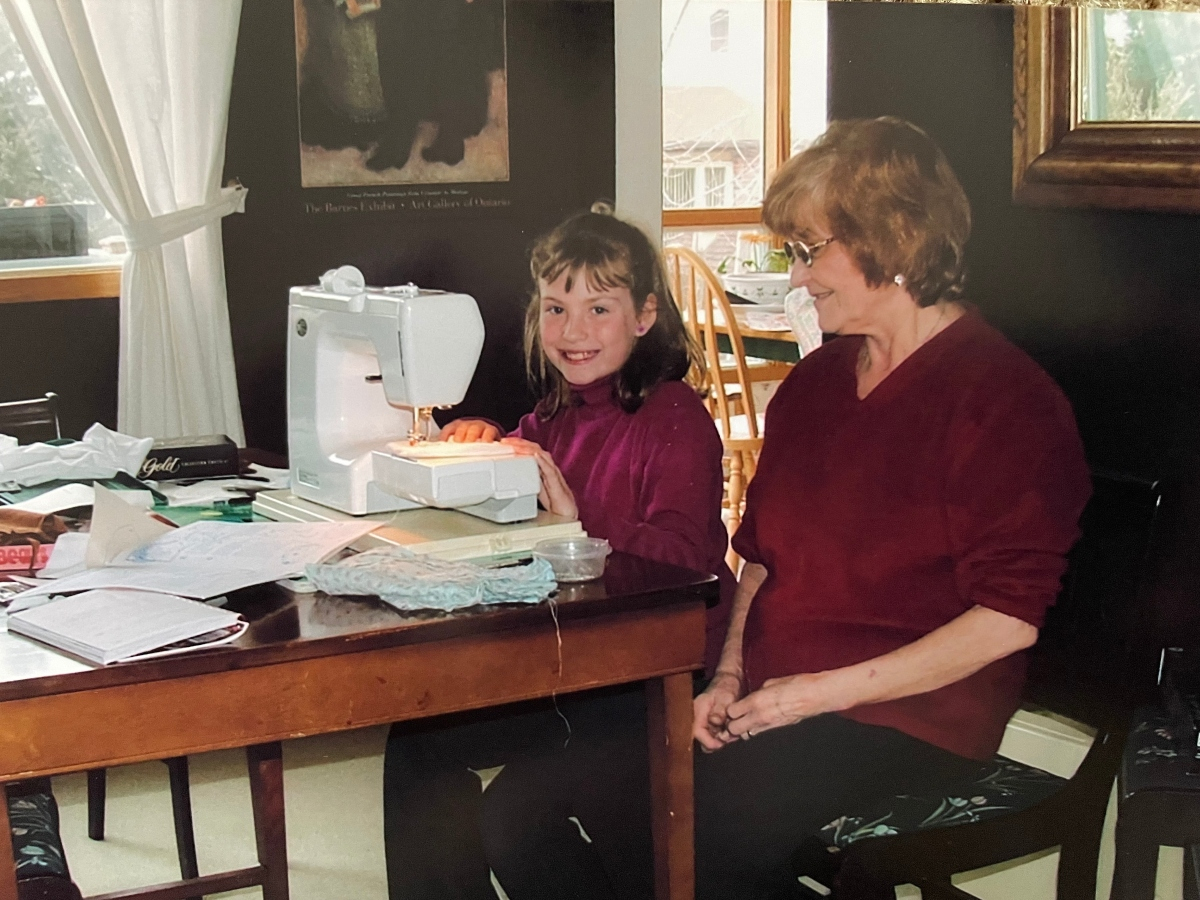Support strong Canadian climate journalism for 2025
These in-their-own-words pieces are told to Patricia Lane and co-edited with input from the interviewee for the purpose of brevity.
Bryn Davis Williams is disrupting the intimate garment industry.
Together with her business partner Jessica Bosman, these young women have figured out how to make a more comfortable bra while reducing environmental impacts and using fair labour practices.

Tell us about your company.
DOUBL offers women made-to-measure, guaranteed comfortable bras, which are ordered online. Bras are the most complex garment on the market today. The current sizing system usually relies solely on bust size and mass-produced band width and length. But for a bra to fit well, it is also necessary to consider breast shape, position, mass, shoulder shape and torso size. We use an algorithm that calculates a perfect fit from a five-minute scan customers provide of their fully clothed body.
We are able to do this at a competitive price by combining artificial intelligence with an individual focus informed by our own mostly terrible experiences as wearers of other bras.
We know that today’s thoughtful consumers care about the impact their choices have on other people and our planet. We use recycled materials and since the garments are made here and really do fit well, the return rate is almost nil. This radically reduces transportation costs and greenhouse gas emissions from our product. The growing demand from discerning customers means it is also smart business sense to pay the women who sew each bra fairly and ensure they have good working conditions.

How did you get into this work?
At Western University’s Ivey School of Business, we were challenged to come up with a new business idea. To do this, our group considered which industries had remained unchanged and might be ready for the kind of disruption Uber brought to taxis. Could that disruption also be good for the climate and workers?
Jessica and I have always loved fashion, so that was a natural place to look. Although the fashion industry generally now includes a strong market in resale clothing, which is much better for the climate, it does not include undergarments and by and large, it does not factor in decent working conditions. We wanted both.
We realized the consumer and producer experience of undergarments has remained unchanged for at least 100 years. Bra fittings, if they occur at all, are cumbersome and often inaccurate with the result being they are often uncomfortable. Bras are usually made thousands of miles away under terrible working conditions with a high environmental impact. We wondered if we could both improve the experience, reduce its environmental impact and support good jobs close to home.
We spent six years thinking about the idea, researching suppliers and building the algorithm that allows for this custom-made online service. We offered our first sales earlier this year with great success across all our metrics. In the fall, we will launch simultaneously in both Canada and the United States.

What makes your work hard?
The complexity has meant a long time in development, but in the meantime, I had the privilege of working with other activist brands like Ben and Jerry’s and Seventh Generation learning what is involved in operationalizing their founders’ values at scale.
Tell us about your background.
My maternal grandparents came to Hamilton from the former Yugoslavia with an ingrained habit of being careful of resources, such as growing vegetables. My parents taught me how to garden and we had lots of time outdoors, especially in the summer, with canoe trips and backcountry camping. It was important to us that we appreciate nature.
My experience with the Model United Nations in high school and university educated me about human rights issues in the garment industry. Our bras are not necessarily a solution in terms of reversing climate impacts or ending exploitation, but they are an improvement and represent my hope that they will reduce the problems associated with fashion.

Is there anything you would like to say to other young people?
I sometimes see people on my Instagram feed bragging about their “fashion hauls” — the number or kind of clothes they were able to buy for not much money. But consider that no one would brag about how long they idled their car even if it didn't cost them much to do so or about taking advantage of exploited labour. Fast fashion and single-use wear fashion are so bad for our futures. You can get the “retail therapy” hit by shopping at resale outlets or enjoying vintage clothing or renting for special or fun occasions. With good bras, everything looks and feels better, too.
What about older readers?
No matter our age, we vote with our wallets. Don’t underestimate the power of your consumption habits. Many companies move in a sustainable direction not just for environmental reasons, but because there is demand. Yes, it is one purchase at a time, but they really do add up.






Comments
The bras in their own ads don't fit the models: they ride up, put killer pressure on the straps (check out the deep shoulder indents), and don't provide support.
Looks like they might be a fashion accessory for people who don't need a bra in the first place.
Yayy fashion, I guess.
"To do this, our group considered which industries had remained unchanged and might be ready for the kind of disruption Uber brought to taxis."
I have a hard time seeing the positives, in a broad societal sense, of most instances of platform capitalism (read businesses based on a website or web app) that have flourished (and disrupted) in the continuing (credit effective lobbyists) regulatory vacuum of an unprepared governing structure.
And, as these founders presumably wish to sustain their business, I'd suggest the Uber model is, perhaps, not one to emulate. Unless they have a deep-pocketed sugar-[benefactor].
I do wish these promotional vignettes the CNO is choosing to commission detailed a full 360 view of whatever enterprise is being featured, as opposed to (mostly, IMO) superficial cheerleading.